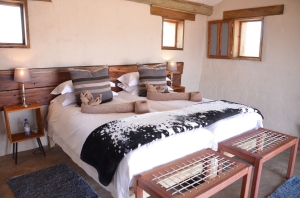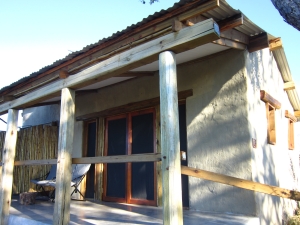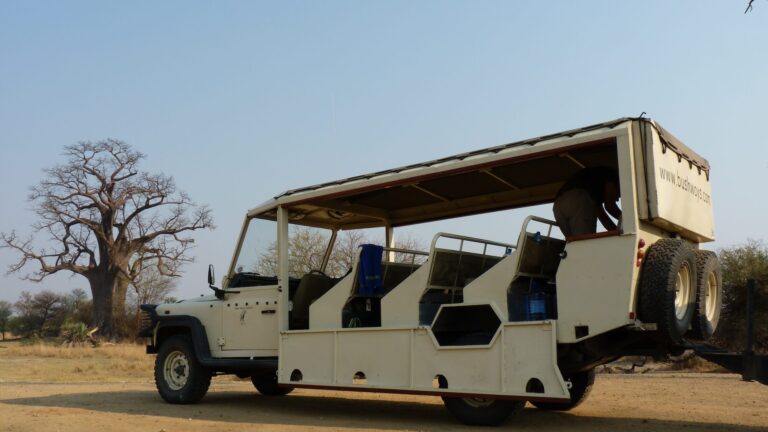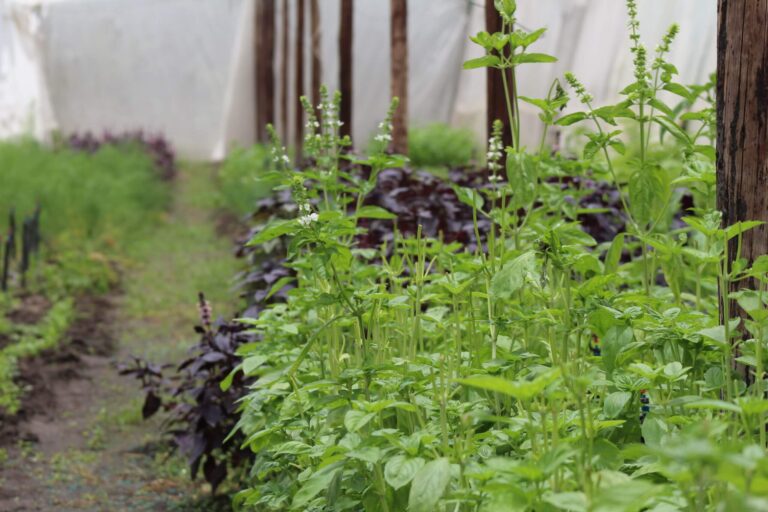Chobe Elephant Camp is based in the semi-arid bush of Africa – overlooking the floodplains of the Chobe River. While developing the Lodge we had to address the challenge of extreme temperature variations of this area and how to combat this. Initially we planned to build Chobe Elephant Camp with the same Canvas material Sango Safari Camp is made of. However once we had experienced the extreme conditions we realised that this was not the ideal material to use.
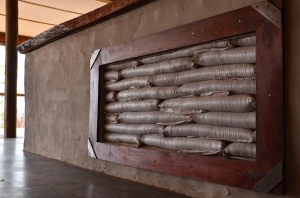 Our Directors searched for alternative methods that would give us the insulating properties and be able to withstand the harsh African environment without having to compromise on guests comfort. The solution came from a professor in Cape Town who invented a sand-bag technique for building walls and entire houses out of it. This technique has several advantages against other usual building materials. Firstly there is no high pollution material as cement used in the wall construction – the process of making cement is one of the most polluting processes in the world as it releases vast quantities of heavy metals into the atmosphere. Further the core material of the sand bag technique, the red Kalahari sand, is found on-site – the nearest bricks are made over 200km away and it would have taken many truck loads to build the lodge. On-top of that, the cement required to make the bricks would have been sourced from over 1000 km away. In contrast to that, all the bags required to build the lodge, including the staff village and storage buildings, fitted onto one truck.
Our Directors searched for alternative methods that would give us the insulating properties and be able to withstand the harsh African environment without having to compromise on guests comfort. The solution came from a professor in Cape Town who invented a sand-bag technique for building walls and entire houses out of it. This technique has several advantages against other usual building materials. Firstly there is no high pollution material as cement used in the wall construction – the process of making cement is one of the most polluting processes in the world as it releases vast quantities of heavy metals into the atmosphere. Further the core material of the sand bag technique, the red Kalahari sand, is found on-site – the nearest bricks are made over 200km away and it would have taken many truck loads to build the lodge. On-top of that, the cement required to make the bricks would have been sourced from over 1000 km away. In contrast to that, all the bags required to build the lodge, including the staff village and storage buildings, fitted onto one truck.
Not only the optimal procuring of building material, but also the precise planning of the logistics in camp has a significant impact on the reduction of the carbon footprint of this area. Our Operations base in Maun is planning meticulously on a daily basis every movement of any the vehicles coming in or going out of the camp. Thus we are making sure that fuel is used efficiently and not wasted thoughtless.
All the construction timber and furniture in the Chalets and in the main area was also manufactured on site and are made from renewable wood sources or from reclaimed wood. We therefore did not use any tropical hardwoods, in order to make a positive contribution to the reduction of the massive deforestation as a result of global demand for teak.
We also keep our power usage in Camp as low as possible. Hence we are using the sun’s energy to heat all the water used in the camp and in the staff village. All the lighting in the camp is of low wattage LED lights – thus we are reducing the power consumption notably. Furthermore with the special design of the Chalets and the use of the red Kalahari sand, which creates a natural insulating barrier, there is no necessity of using high power consummating air conditioners.
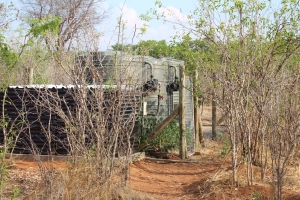 Another very important step to reduce the impact on the environment and the surrounding wilderness is the correct handling of sewage and garbage. Water pollution comes from many sources including pesticides and fertilizers that wash away from farms, untreated human waste water, and industrial waste. Even groundwater is not safe from pollution, as many pollutants can leach into underground aquifers. To ensure no pollutants enter into the underlying water table and floodplains Chobe Elephant Camp is making use of its own above ground sewerage treatment plant. In addition the garbage produced in Camp is separated carefully and disposed on a special waste disposal plant.
Another very important step to reduce the impact on the environment and the surrounding wilderness is the correct handling of sewage and garbage. Water pollution comes from many sources including pesticides and fertilizers that wash away from farms, untreated human waste water, and industrial waste. Even groundwater is not safe from pollution, as many pollutants can leach into underground aquifers. To ensure no pollutants enter into the underlying water table and floodplains Chobe Elephant Camp is making use of its own above ground sewerage treatment plant. In addition the garbage produced in Camp is separated carefully and disposed on a special waste disposal plant.
Chobe Elephant Camp is closely linked to the community. A number of the staff were involved with the initial building of the camp, and joined the team with no previous experience in the hospitality industry. With constant skill training from our base and in the Camp we are proud to now employ over 30 people at Chobe Elephant Camp.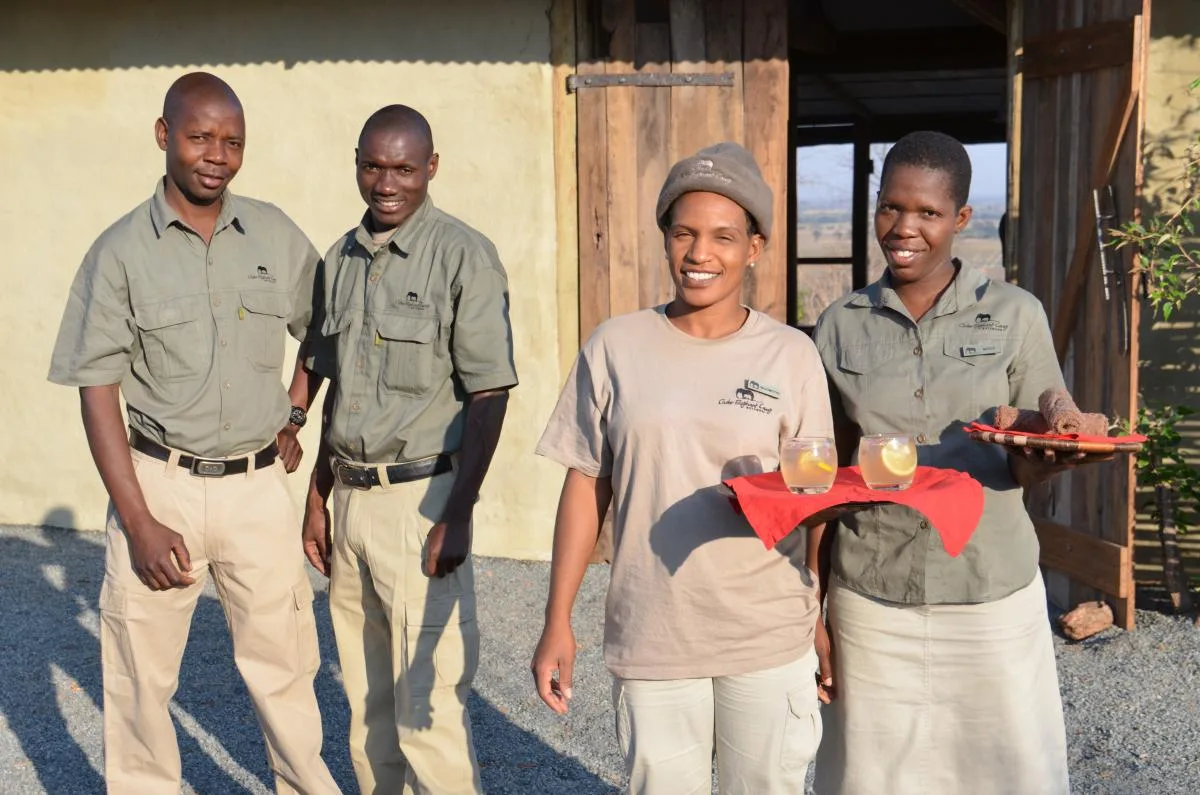 The positive impact of having community members deriving direct benefits from tourism are already being felt as the local communities begin to realise the value of conserving the wildlife and environment. We have engaged with local schools and invite the children to the lodge to educate them on conservation and tourism as well as taking them into the national park to experience a ‘game-drive’ as our guests do. We also encourage village tours for our guests – these are authentic experiences which show our guests how people grow up and survive living amongst Africa’s wild animals and it also educates the local communities about other cultures, as they get to interact.
The positive impact of having community members deriving direct benefits from tourism are already being felt as the local communities begin to realise the value of conserving the wildlife and environment. We have engaged with local schools and invite the children to the lodge to educate them on conservation and tourism as well as taking them into the national park to experience a ‘game-drive’ as our guests do. We also encourage village tours for our guests – these are authentic experiences which show our guests how people grow up and survive living amongst Africa’s wild animals and it also educates the local communities about other cultures, as they get to interact.
We believe that all the taken steps contribute to a better understanding amongst the community and the improvement of the environment as well the surrounding wilderness. Although we are aware of the fact that many more actions can be taken, we firstly want to make sure that what we do is sustainable and has long term benefits to succeed.
With all the support and awareness amongst every party involved, we are convinced to make a considerably contribution to a greener future and the responsible usage of resources.


